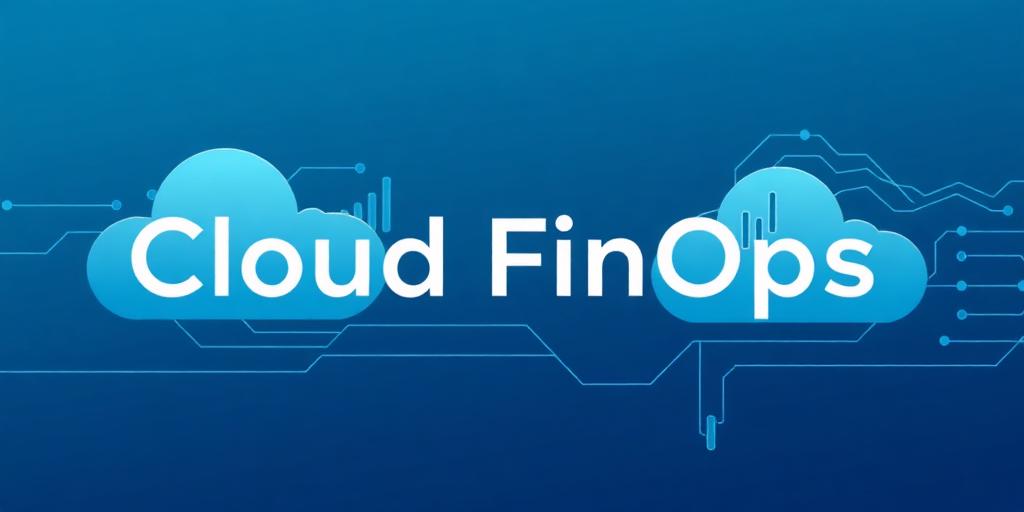A Guide to Cloud FinOps: Mastering Your Cloud Financial Operations
In the rapidly evolving landscape of cloud computing, the ability to effectively manage and optimize cloud spend has emerged as a critical strategic imperative. Gone are the days when cloud adoption was solely the domain of technical teams; today, financial accountability and operational efficiency are paramount. This is precisely where Cloud FinOps, or Cloud Financial Operations, takes center stage—a cultural practice and operational framework that brings financial governance to the dynamic world of cloud infrastructure.
This comprehensive guide will delineate the core tenets of FinOps, elucidate its strategic significance, and provide actionable insights for organizations striving to achieve superior cloud financial management. Understanding and implementing FinOps is no longer an option, but a necessity for sustainable cloud growth.
What is Cloud FinOps?
Cloud FinOps is a collaborative, data-driven approach to managing cloud costs that fosters shared responsibility across engineering, finance, and business teams. It’s a paradigm shift from traditional cost management, embracing the variable spending model of the cloud to ensure that organizations gain maximum business value from their cloud investments. At its heart, FinOps is about driving financial accountability in the cloud, enabling informed spending decisions, and fostering continuous optimization.
The FinOps Foundation defines three core principles:
- Inform: Ensuring visibility and allocation of cloud costs. This involves gathering data, building dashboards, and attributing costs to specific teams, projects, or business units.
- Optimize: Implementing strategies to reduce cloud spend while maintaining or enhancing performance. This includes rightsizing resources, utilizing reserved instances or savings plans, and leveraging spot instances.
- Operate: Continuously improving the FinOps practice through automation, governance, and a culture of cost awareness.
The Strategic Imperative of Cloud Financial Management
The agility and scalability offered by cloud services are undeniable, yet without robust financial oversight, these benefits can quickly be overshadowed by escalating costs. Challenges such as resource sprawl, lack of cost visibility, and unoptimized cloud environments often lead to significant waste. Effective cloud financial management provides a structured approach to address these issues, transforming cloud spending from an uncontrolled expense into a strategic investment.
By adopting a FinOps framework, organizations can:
- Enhance forecasting accuracy for cloud expenditures.
- Improve cost allocation and chargeback mechanisms.
- Drive efficiency through continuous optimization of cloud spending.
- Foster a collaborative culture between technical and finance departments.
- Align cloud usage directly with business value.
Implementing a FinOps Framework: Practical Considerations
Successful FinOps implementation requires more than just tools; it demands a cultural shift and a structured approach. Organizations embarking on this journey should consider the following steps:
1. Establish Data Visibility and Allocation
The foundational step involves gaining comprehensive visibility into cloud spending. This necessitates robust tagging strategies, detailed cost allocation models, and the use of cloud provider billing tools or third-party FinOps platforms. Understanding where and why costs are incurred is critical for effective management. This phase is key to optimizing cloud spending and identifying areas for improvement.
2. Drive Cost Optimization Initiatives
With data in hand, the next phase focuses on proactive optimization. This includes:
- Rightsizing: Adjusting instance types and sizes to match actual workload requirements.
- Reserved Instances (RIs) & Savings Plans: Committing to specific usage levels for discounted rates.
- Automated Shutdowns: Implementing policies to turn off non-production resources during off-hours.
- Spot Instances: Leveraging highly discounted, interruptible compute capacity for fault-tolerant workloads.
- Storage Optimization: Identifying and archiving cold data, leveraging lower-cost storage tiers.
3. Foster Collaboration and Accountability
FinOps thrives on collaboration. Engineers must be empowered with cost data and educated on cost-effective architectures. Finance teams need to understand the technical nuances of cloud billing. Business units must align their objectives with cloud expenditure. Establishing clear roles, responsibilities, and communication channels is paramount for achieving financial accountability in cloud operations.
4. Implement Continuous Governance and Automation
FinOps is an ongoing process, not a one-time project. Establishing governance policies—such as budget alerts, automated cost controls, and regular review cycles—ensures sustained financial discipline. Automation, from infrastructure provisioning to cost reporting, further streamlines operations and reduces manual effort, reinforcing the benefits of a robust FinOps practice.
Conclusion: The Path to Sustainable Cloud Value
Cloud FinOps represents a crucial evolution in how enterprises manage their cloud investments. By uniting finance, operations, and business functions, it transforms cloud cost management from a reactive exercise into a proactive, value-driven strategy. Embracing the FinOps methodology not only mitigates financial risks but also unlocks greater agility and innovation, ensuring that cloud resources are utilized efficiently and aligned with core business objectives. For any organization committed to maximizing its cloud ROI, a mature FinOps capability is indispensable.









